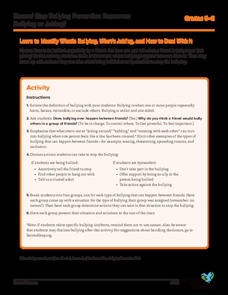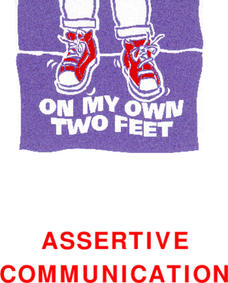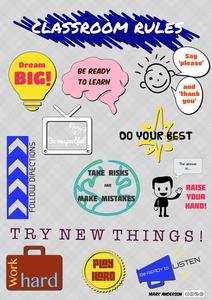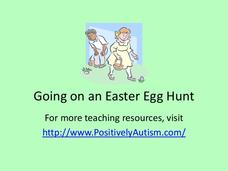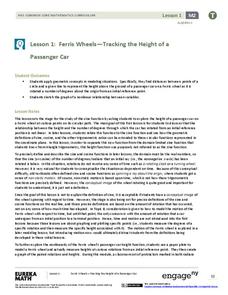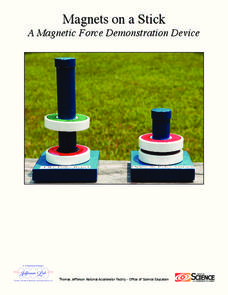Curated OER
Treasure Island XXVIII: Operations of Intelligent Behavior
Are you reading Treasure Island by Robert Louis Stevenson in your class? Provide your class with this reading guide for chapter 28. Readers respond to 10 questions, and there's a page dedicated to explaining the purpose and directions to...
Student Handouts
Classroom Sign on Overreacting
You can't always get what you want, but that doesn't mean the whole class should experience your disappointment. There's no need to tell your pupils to stop being big babies if you post this sign up on the wall. All you'll need to do is...
Teacher Treasures
Class Credit Cards
Give children credit where credit is due with this classroom management system. Providing each student with their very own charge card, they are able to gain credit for being respectful and responsible and can spend their earnings on...
EngageNY
Ferris Wheels—Using Trigonometric Functions to Model Cyclical Behavior
Have class members going in circles as they model the path of a Ferris Wheel using trigonometric functions. Building on the previous lesson in this series on transformations, learners use trigonometric functions to model wheels of...
Bully Free Systems
Bully Free Lesson Plans—Kindergarten
Keep bullying away with the help of two lessons that focus on the golden rule and reporting hurtful behavior. Both lessons incorporate a classroom meeting that encourages an open dialogue about making good choices at school. Finger...
Committee for Children
Learn to Identify What’s Bullying, What’s Joking, and How to Deal With It
A quick lesson takes a look at the differences between bullying and joking. Through whole-class discussion, scholars identify between the two behaviors and brainstorm actions to take to cease bullying behavior. Small groups share with...
Department of Education (Ireland)
Assertive Communication
Assertive communication is an acquired skill. Teaching young people to ask for what they need and to believe that they have a right to ask is at the core of a unit on assertive communication. Over the course of the unit, middle and high...
Curated OER
It's a Gas! Or is it?
Oceanography enthusiasts are given a series of thought experiments to consider in order to relate the solubility of gases and solids to underwater volcanoes. It is not particularly engaging to perform these thought experiments. Choose...
Curated OER
Review and Post Test (Sex Ed)
Use this assessment activity in your sex education unit. After going over the answers of the homework assignment from the previous lesson, learners can begin the post-test. A comprehensive set on fifty questions mixes up the types of...
Curated OER
The Old White Sheet Trick
Students attract night animals. In this Science lesson, students use a large white surface and a light at night. Students observe and record what they see.
Curated OER
Behavior of Waves
Lots of definitions are given here, and your students will find the details and links useful, along with the diagrams and examples.
Curated OER
Gas Pressure and Volume
A class might find this presentation complicated at first, but with your explanations would understand the relevancy of the diagrams included. An animnated plunger shows the change in pressure on a gas and makes the reasoning behind the...
Curated OER
Student Opinion: How Impulsive Are You?
Sure to spark lively discussion in any Language Arts classroom, this article from The York Times asks the question, 'How much self-control do you have?'. Pupils begin by reading a short passage about a study on delayed gratification and...
Prince William Network
The Incredible Journey
Divide your school gym into breeding grounds and non-breeding grounds so that your zoologists can play a game simulating the seasonal migration of shorebirds. Players pick one of the included game cards and follow its directions, which...
Curated OER
Classroom Rules
Rather than focus on punitive actions and consequences for mistakes, make a safe and inspiring learning environment the rule of your classroom.
Together Group
Substitute Report
What was the overall behavior of your class while you were away and they were with the substitute? Which students had difficulty in particular subject areas, and which were more challenging than others? Get the answers to these questions...
Curated OER
Parent-Teacher Conference
Assess your kids' strengths, areas for improvement, and classroom behavior with a worksheet for parent-teacher conferences. A cute worksheet allows parents to see how their kids are doing in your class, and what opportunities they have...
Positively Autism
"Going on an Easter Egg Hunt" Social Skill Story
Easter egg hunts are the focus of this social skill story that lets kids know what to expect and establishes expectations for behavior as well.
Positively Autism
"Decorating Easter Eggs" Social Skill Story
Prepare kids for Easter egg decorating with a social skills story that explains the process and details appropriate behavior for the activity.
EngageNY
Ferris Wheels—Tracking the Height of a Passenger Car
Watch your pupils go round and round as they explore periodic behavior. Learners graph the height of a Ferris wheel over time. They repeat the process with Ferris wheels of different diameters.
It's About Time
The Chemical Behavior of Atoms
Assist your class with this colorful activity as students view and interpret changes in the hydrogen atom. They discuss concepts of the electromagnetic spectrum and use Bohr's model to predict wavelengths and light patterns,...
Concord Consortium
Plastic Forces
Plastic is fantastic! But, why does it behave the way it does? Science sleuths investigate the behavior of plastic in response to applied forces using an interactive. The resource allows users to bend a sample of plastic using three...
US Department of Energy
Magnets on a Stick: A Magnetic Force Demonstration Device
Why do some magnets attract while others repel? Scholars use clearly labeled permanent magnets to explore the attractive question. They compare the behavior of like versus opposite poles to find the answer.
Creative Learning Exchange
Lesson Plans From The Lorax
When it comes to the environment, no variable is constant. Class members graph behavior over time for the thneeds produced over truffula trees chopped down over the course of Dr. Seuss's The Lorax.
Other popular searches
- Animal Behavior
- Positive Behavior
- Behavioral Ecology
- Learned Behavior
- Behavior Charts and Graphs
- Ethical Workplace Behavior
- Behavior Management
- Behavioral Adaptations
- Innate Behavior
- Behavior in the Workplace
- Inappropriate Behavior
- Behavior Modification







